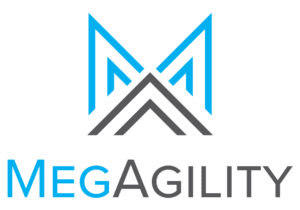
Sustainable development is a key factor to any successful organization and must be considered when undertaking an Agile transformation. Sustainable development promotes steady and consistent feature delivery, happier employees, better quality products and more satisfied customers. For these reasons, and more it is the 8th Agile Principle in the Agile Manifesto.
“Agile processes promote sustainable development. The sponsors, developers, and users should be able to maintain a constant pace indefinitely”
In this article we will discuss how having the right roles established, as well as alignment at the most senior level for those roles, will foster sustainable development. This is critical, when implementing an Agile framework at scale and will be the difference between your Agile transformation being a success or failure.
Whether your organization is adopting Scrum, Kanban, a mix of the two, or something else the roles for most Agile teams remain the same.
Product Owner (Product)
Scrum Master/Agile Coach(Process)
Scrum Team/ Delivery Team (Technology)
Each of these roles is unique and carries a certain set of responsibilities. This article assumes you are aware of those responsibilities and will not focus on them.
When Agile teams are constructed properly these roles create a shield of protection for the organization. Together they spend time working on what is most important. They identify risks and dependencies. They ensure work is flowing, impediments are addressed, and execution is as predictable as it can be.
But what happens when Technology, Product and Process are not aligned? What happens when these roles are not filled with the right skill sets or when each role has different expectation of what their area is responsible for?
The same thing that happens to the human body when it is not balanced. Fatigue sets in, illness becomes more prevalent and if not taken care of, disease spreads. We all know what corporate disease looks like. People do not work well together. Employees complain often and are not happy. Turn over is high. Delivery is poor and burn out is inevitable.
At a recent client, the Product and Technology leaders did not align at the executive level and thus the teams beneath them suffered. With more organizations driving towards digital transformations, Technology and Product organizations carry a lot of power. Their alignment or lack there of, can be the difference between your organization overcoming the digital era or succumbing to it.
This organization was not aligned when it came to hiring or creating new teams, leading to teams missing critical roles and expanding in very unbalanced ways. There was no alignment around skill sets each role should possess, leading to incompetent individuals filling key roles. There was a lack of alignment around team tools, leading to the inability to measure delivery consistently. There was also a mass divide on what it meant to be successful causing tension and arguments to flare daily. Lastly, there was no safe escalation path for these problems to be addressed so they went unsolved.
These issues created an absurd amount of rework and impeded delivery. They caused some roles to be over utilized and others to be underutilized. This created a stress induced culture, where critical issues went under the radar and turn over was high.
Ultimately, these teams were not abiding by the 8th Agile Principle and lacked sustainability.
A Pulmonologist once told me he liked smokers, as they kept him employed. Well as an Agile Transformation Coach, these are the stories that keep me employed but as a human these stories are defeating and all to common.
Agile Transformations can only progress so far without sustainability and to be sustainable alignment around Technology, Product and Process is critical. Successful Organizations understand this and work together when it comes to anything impacting their teams.
